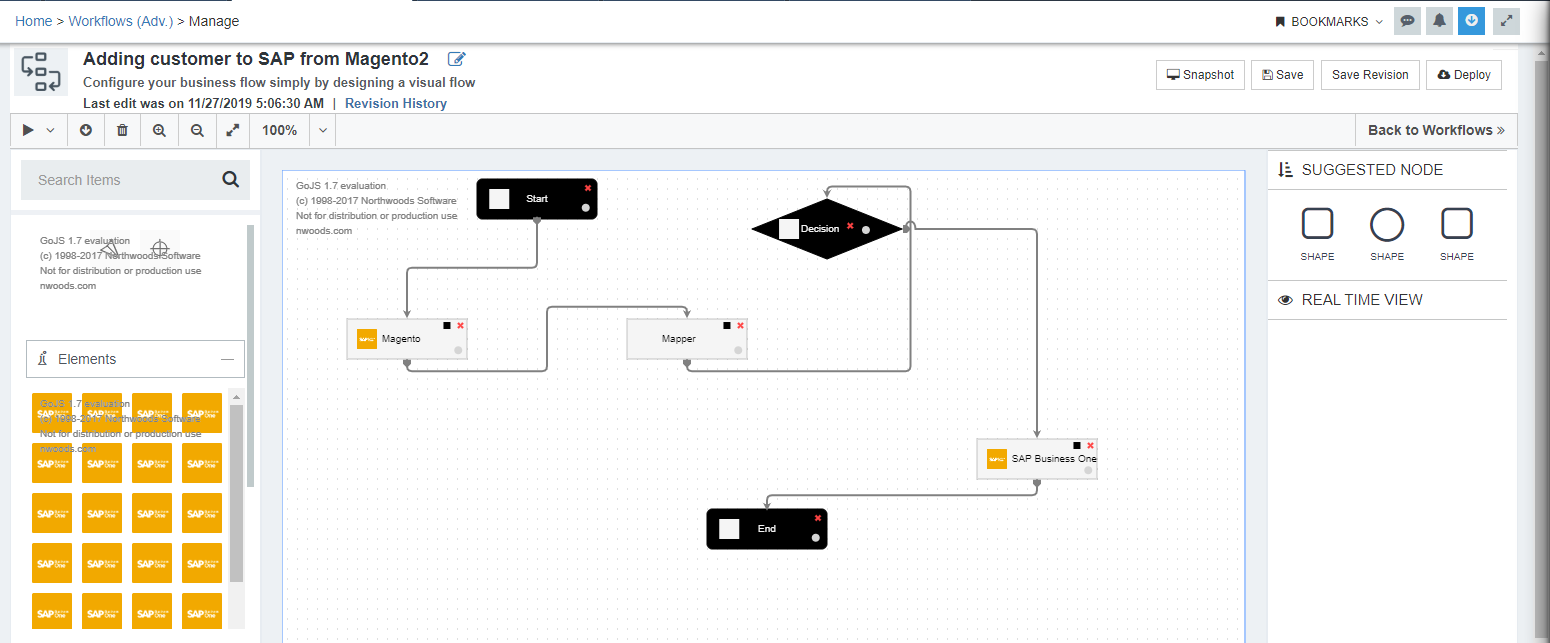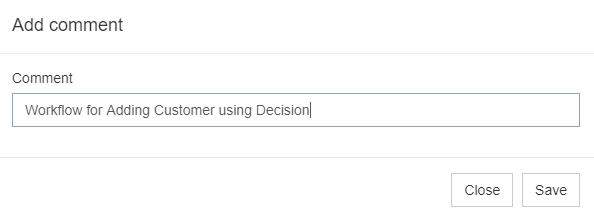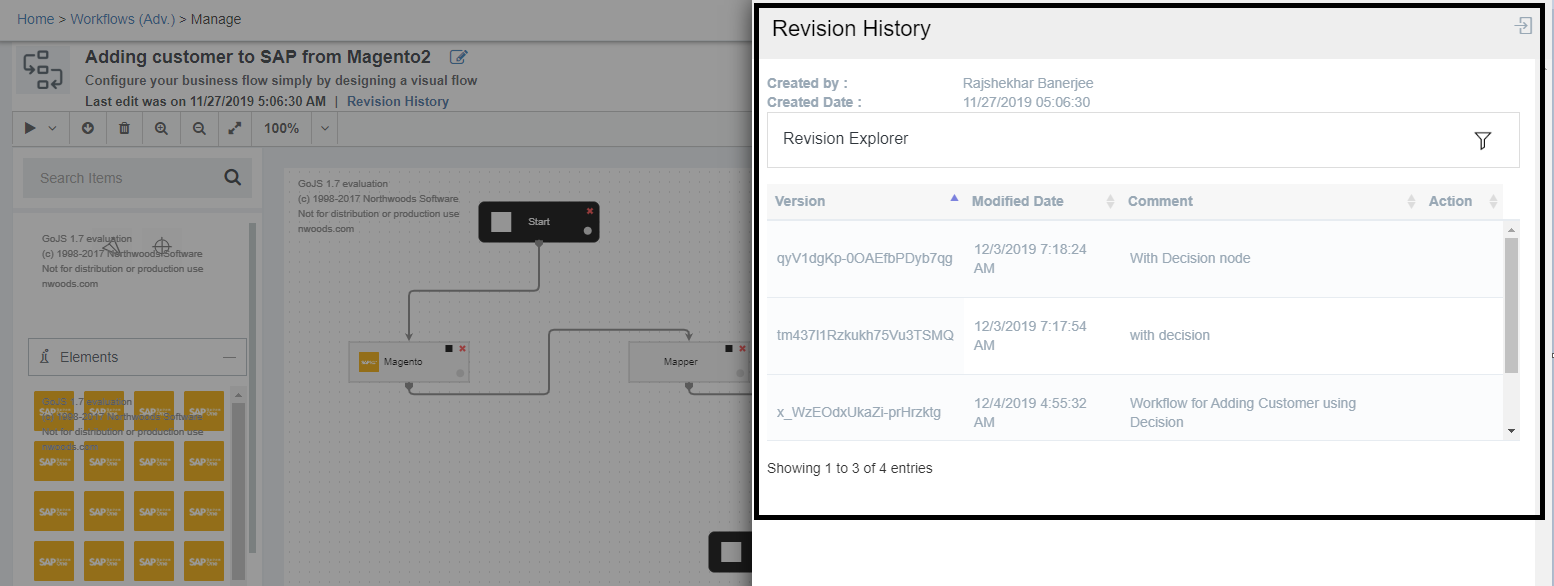Saving & Restoring Revised Advance Workflow
Updated:
Users/Implementers of APPSeCONNECT requires to edit and modify workflows frequently as per the business requirement. Advance Workflows is enabled with the feature of saving revised editions which means users/implementers of APPSeCONNECT can now save a revised version of the created workflow and modify changes to the existing workflow with respect to the business process.
Scenario Briefing
As a User/Implementer, I want to commit changes to the designed workflow, and it has been observed that designed workflow doesnot fulfils the business process, but I want to save the designed workflow (version wise) before editing the workflow so that whenever needed I can restore the previous version to for revise purpose.
Saving Revisions is now possible on APPSeCONNECT and user can save multiple version of a workflow for revision.
Prerequisites of Saving & Restoring Revisions
- You need a valid credentials to the APPSeCONNECT portal.
- You need to have a saved workflow.
Steps for Saving workflows for Revision
- Login to APPSeCONNECT portal and navigate to Advance Workflow Section. The Advance Workflow Listing page opens.
- Create a Workflow or open an existing workflow. The page for designing and executing advance workflow opens.

- In the Workflow Header Panel, Click SAVE REVISION, for saving a revised version of the existing workflow.

Note: TheSAVE REVISIONbutton appears only after saving a created Workflow. - While saving a revision, user needs to provide a comment for distinguishing the workflow while
restoring. Therefore, on clicking the SAVE REVISION button, user gets a window for adding COMMENT
to the workflow that is being saved for later use.

Protip: It is recommended to provide the comment as per the business process or workflow design. For Ex:Workflow for adding Sales Order using Halt & Resume,Workflow for adding Business Partner using Delay Node. - Clicking SAVE button, user gets confirmation message for the workflow being saved for revision.

- Once the workflow is saved, user can click on the Revision History button. The user will get a sliding window
with the view of all the revision workflows.

- The Revision history window display the detail of the workflow that was first created. The details that will be displayed are:
- Created By: Will display the name of the user, who created the original Workflow.
- Created Date: Will display the date and time, when the workflow was first created.
- Users/Implementers of APPSeCONNECT will also get the privilege to filter workflow based upon the revision list. User needs to
click on the Filter icon to enable the Search option.

- The revision list will have all the workflows that were saved for revisions. The table will have the columns Version, Modified Date, Comment & Action.
- Hovering on each Revision Workflows, button with three horizontal dots will appear which will enable the user to provide actions to the workflows. The actions that can be implemented are:
- Restore
- Delete
- Users/Implementers will be able to edit the Revision Workflows by clicking on the Restore Button for that workflow.
Note:- Any changes made on a restored workflow, on saving its revision, a new entry will be created in the Revision History. No entries would be deleted, if a revised workflow is saved for another revision.
- On deleting a revision, every detail of that revision will be erased. User cannot restore the revision after deleting it from the Revision History.
- Deploying of workflow has no dependability on revision of the workflow, which means restoring a workflow from revision will not save any deployment history.


